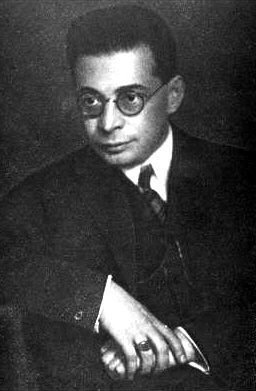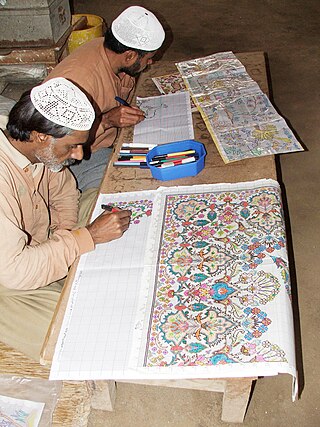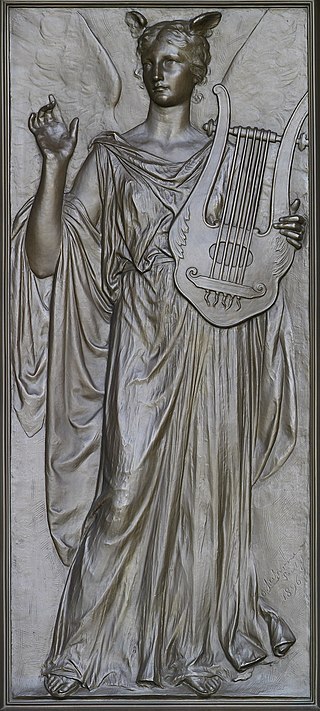
An invention is a unique or novel device, method, composition, idea or process. An invention may be an improvement upon a machine, product, or process for increasing efficiency or lowering cost. It may also be an entirely new concept. If an idea is unique enough either as a stand-alone invention or as a significant improvement over the work of others, it can be patented. A patent, if granted, gives the inventor a proprietary interest in the patent over a specific period of time, which can be licensed for financial gain.

Otto Rank was an Austrian psychoanalyst, writer, and philosopher. Born in Vienna, he was one of Sigmund Freud's closest colleagues for 20 years, a prolific writer on psychoanalytic themes, editor of the two leading analytic journals of the era, managing director of Freud's publishing house, and a creative theorist and therapist. In 1926, Rank left Vienna for Paris and, for the remainder of his life, led a successful career as a lecturer, writer, and therapist in France and the United States.

Creativity is a characteristic of someone or some process that forms something new and valuable. The created item may be intangible or a physical object.
Psychology is an academic and applied discipline involving the scientific study of human mental functions and behavior. Occasionally, in addition or opposition to employing the scientific method, it also relies on symbolic interpretation and critical analysis, although these traditions have tended to be less pronounced than in other social sciences, such as sociology. Psychologists study phenomena such as perception, cognition, emotion, personality, behavior, and interpersonal relationships. Some, especially depth psychologists, also study the unconscious mind.
Psychosynthesis is an approach to psychology that expands the boundaries of the field by identifying a deeper center of identity, which is the postulate of the Self. It considers each individual unique in terms of purpose in life, and places value on the exploration of human potential. The approach combines spiritual development with psychological healing by including the life journey of an individual or their unique path to self-realization.

Links between creativity and mental health have been extensively discussed and studied by psychologists and other researchers for centuries. Parallels can be drawn to connect creativity to major mental disorders including bipolar disorder, schizophrenia, major depressive disorder, anxiety disorder, OCD and ADHD. For example, studies have demonstrated correlations between creative occupations and people living with mental illness. There are cases that support the idea that mental illness can aid in creativity, but it is also generally agreed that mental illness does not have to be present for creativity to exist.
Creativity techniques are methods that encourage creative actions, whether in the arts or sciences. They focus on a variety of aspects of creativity, including techniques for idea generation and divergent thinking, methods of re-framing problems, changes in the affective environment and so on. They can be used as part of problem solving, artistic expression, or therapy.
The expressive therapies are the use of the creative arts as a form of therapy, including the distinct disciplines expressive arts therapy and the creative arts therapies. The expressive therapies are based on the assumption that people can heal through the various forms of creative expression. Expressive therapists share the belief that through creative expression and the tapping of the imagination, people can examine their body, feelings, emotions, and thought process.

Art therapy is a distinct discipline that incorporates creative methods of expression through visual art media. Art therapy, as a creative arts therapy profession, originated in the fields of art and psychotherapy and may vary in definition. Art therapy encourages creative expression through painting, drawing, or modelling. It may work by providing a person with a safe space to express their feelings and allow them to feel more in control over their life.
Creative visualization is the cognitive process of purposefully generating visual mental imagery, with eyes open or closed, simulating or recreating visual perception, in order to maintain, inspect, and transform those images, consequently modifying their associated emotions or feelings, with intent to experience a subsequent beneficial physiological, psychological, or social effect, such as expediting the healing of wounds to the body, minimizing physical pain, alleviating psychological pain including anxiety, sadness, and low mood, improving self-esteem or self-confidence, and enhancing the capacity to cope when interacting with others.
The ways in which societies have perceived the concept of creativity have changed throughout history, as has the term itself. The ancient Greek concept of art, with the exception of poetry, involved not freedom of action but subjection to rules. In Rome, the Greek concept was partly shaken, and visual artists were viewed as sharing, with poets, imagination and inspiration.

The following outline is provided as an overview of and topical guide to thought (thinking):

Imagination is the production of sensations, feelings and thoughts informing oneself. These experiences can be re-creations of past experiences, such as vivid memories with imagined changes, or completely invented and possibly fantastic scenes. Imagination helps apply knowledge to solve problems and is fundamental to integrating experience and the learning process. As a way of building theory, it is called "disciplined imagination". A way of training imagination is by listening to storytelling (narrative), in which the exactness of the chosen words is how it can "evoke worlds".
The International Association of Empirical Aesthetics (IAEA) is a psychological organization founded to scientifically investigate the nature of aesthetic experience and aesthetic behavior. The group has members in over 25 countries. IAEA was founded at the first international congress in Paris in 1965 by Daniel Berlyne, Robert Francés, Carmelo Genovese, and Albert Wellek.

Mallica Reynolds, OD, better known by the adopted name "Kapo", was a Jamaican artist and religious leader. Considered one of the greatest artists in Jamaica's "Intuitives" artistic movement, Kapo's religious beliefs were reflected in his work.
Audio therapy is the clinical use of recorded sound, music, or spoken words, or a combination thereof, recorded on a physical medium such as a compact disc (CD), or a digital file, including those formatted as MP3, which patients or participants play on a suitable device, and to which they listen with intent to experience a subsequent beneficial physiological, psychological, or social effect.

Combinatory literature is a type of fiction writing in which the author relies and draws on concepts outside of general writing practices and applies them to the creative process. This method of writing challenges conventional structuralist processes and approaches. To do this, the author investigates alternate disciplines outside the common channels of creative writing and literature, notably mathematics, science and other humanities. The author then applies constraints or influences from the new concepts to their writing process. This inspires creativity in literature regarding form, structure, language and narrative plot, among other things. The emergence of combinatory literature is largely the result of philosophers and intellectuals who have been concerned with the interrelated nature of disciplines and the way these combine to affect brain function. Notable proponents of combinatory literature include T. S. Eliot, Georges Perec and Italo Calvino, whilst modern writers like George Saunders have credited having a multiple disciplinary background as influential on their work.
Cathy Malchiodi is an American licensed professional mental health counselor, registered expressive arts therapist, and art therapist, best known for her work on trauma-informed treatment in expressive arts therapy.
David Michael Greenberg is a psychologist, neuroscientist, and musician. He is best known for his contributions to personality psychology, social psychology, social neuroscience, music psychology, and autism.









